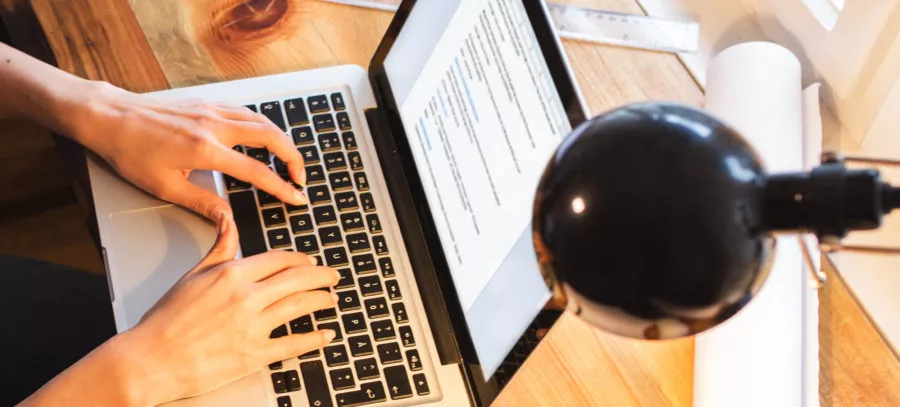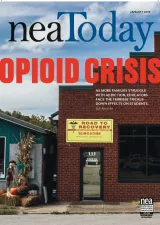For Gwyneth Jones, one of the best parts about blogging is having an ongoing record of all of the cool things she’s doing as an educator.
“I’m very forgetful!” admits the woman behind “The Daring Librarian,” an award-winning technology and library science blog Jones launched more than 10 years ago. “Now I can remember what the heck I did from one year to the next.”
But beyond offering personal documentation of the goings on in her library and school, it’s also a way for Jones to work through ideas, share them with colleagues, and get valuable feedback from her readers.
Best of all, blogging lets her share her passion for education.
If you’re passionate about your profession (and what educator isn’t?) Jones says to dive right in, the water’s fine! It’s crowded in the blogosphere to be sure, but newbies can carve out their own space with their own unique passions.
“It’s never too late to start,” says Jones. “There is room for all
voices.”
But there are some rules for the road, and as a seasoned traveler Jones fields some common questions from would-be bloggers.
To Blog or Not to Blog
Start a blog because you want to share your passion, never because you think you should share your passion.
You must feel a strong desire to blog. If you’re not 100 percent committed, Jones advises that you don’t bother to start. Who needs that extra stress?
How Often to Post
“I try to post at least once or twice a month,” says Jones. “I’d like to do it once a week, but I usually don’t because I’ve got a life! There are definitely stretches when I do three or four posts a month, then fall back to once a month.”
Jones’ posting schedule follows her inspiration. When she discovers something that inspires her, she posts. It’s hard to predict how often that will happen, but the goal should be to post for yourself—to capture that moment that you want to share and record. Never post because you look at the calendar and think, “Uh-oh.”
“Never start a post by apologizing for not blogging in a while,” she advises. “The world is full of excuses, please don’t make your readers slog through your self-induced guilt!”
If you feel passionate enough to start a blog, you should be confident that you can easily post at least once a month. “Don’t try until you’re ready to do it because you’re just going to stress yourself out,” Jones says.
How Do I Use Social Media?
A great reason to blog is because you want to be helpful by offering your ideas to the world. And a great way to get your ideas out is with social media. For example, join Twitter and log on to live Twitter chats related to your educational topic or passion, whether it’s literacy, STEM, or technology. There are at least 100 different education-related chats a week that you can join to converse with other educators about what you’re passionate about.
“Then in your Twitter profile add a link to your blog, so when other educators hover over your name, your profile pops up and they say, ‘Oh look she has a blog, too!’” Jones says. “Or during the chat, you can say, ‘Hey I blogged about this last week, read more about it on my blog at this or that address.’”
But, she warns, don’t join them just to promote your blog. You need to be contributing to the conversation in a meaningful way and offering good content.
Try Microblogging
Twitter and Instagram are essentially microblogging sites, says Jones. So is Pinterest, for that matter, or Facebook. You can post pictures and a long caption to explain, you can share links, ideas and tips that are short and sweet.
If you don’t feel like having a big blog with a fancy URL, or if being unable to write a couple of paragraphs or bullet points will give you guilt trips, you can just start out small with those platforms.
If that’s the route you decide to take to dip your toe in the water, Jones suggests starting with Instagram and sharing that with your students, their parents, and colleagues.
“That’s where our students are and they are really into it, and their parents can also see the great things that go on in your school,” she says.
 Gwyneth Jones
Gwyneth Jones
From there try connecting with the community to share with them what fantastic, positive things happen at school.
“So much media focuses on violence, sexual harassment, discrimination, bullying, or other bad things, and they have to be reported, but I like to push out the positivity to balance out the negative,” Jones says. “Every day I see acts of generosity and joy and innovation and brilliance happening right and left.”
An easy, quick example: She Instagrammed one of her student’s silver high tops with the caption, “Cuteness caught in the hallway—shoes that show sparkle.”
Be Useful
When explaining a classroom concept, show visuals, provide tips on how to do something specific with a step-by-step approach, or include a printable.
“Strive to offer something that will help—even if it’s just a worksheet—even in their daily life as a teacher,” she says. “I blogged that I’m giving out chargers to kids so they can charge their devices, and I posted the sign-out sheet I created for the chargers that tons of people then downloaded.”
A passionate promoter of the #weneeddiversebooks movement, Jones posted a curated list of books celebrating diversity on a bookmark that could be downloaded, copied, and shared.
“Promoting and celebrating diversity and being inclusive is part of what I do every day because we’re a multicultural school and I reflect that,” Jones says. “Maybe it would be different if our school was in New Hampshire or Iowa, but we’re right outside of D.C., Baby! I blog my passions, and I am passionate about welcoming and valuing all students.”



